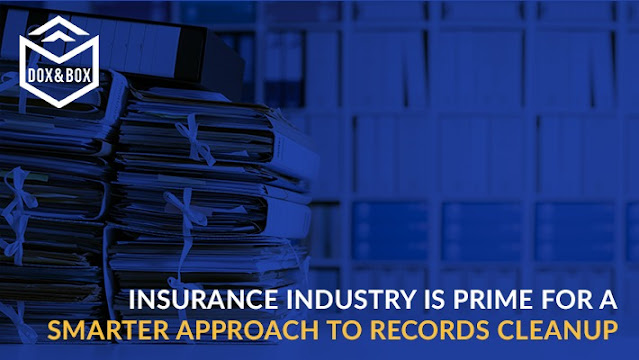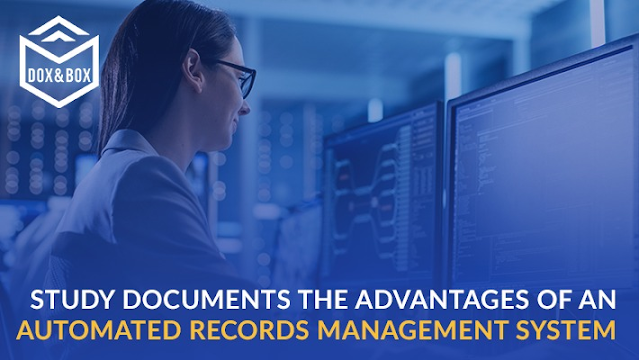Insurance Industry Is Prime For A Smarter Approach To Records Cleanup
You already know that records cleanup has a lot of advantages beyond meeting the transaction's requirements. If you're the divesting company, possibly destroying what has met retention standards can save you a lot of money and effort to digitize what the purchasing company needs.
You'll also save time and money when it comes to packing and relocating the paper records that need to be transferred. You’ll start with a clean, compliant file inventory that can be examined and mined for information if you’re the acquiring company. You save money and space by storing paper records required for compliance, and you spend less time thinking about the risk of keeping files that have passed the retention period.
You could pause here and say, "We've been down this street before," or, more likely, "We never even ended up getting on the road." A divestiture of one of the many other trends affecting the business that are bringing file inventory levels and paper documents into focus: buying and selling, competition from digital insurance natives, workplace conversion strategies to free up an office building, or an office closure or move might have urged records clean - up the project. Whatever happened, the result was almost certainly the same: cleanup was too costly and time-consuming to be done on a large scale.
What's the result? Because there was no clear path to commercial value, record cleansing came to a halt. Your only real option, despite the cost and risk, was to keep everything.
How might Smart Sort help with large-scale record cleanup?
We considerably speed up sorting through records blended by retention date to categorize them by destruction eligibility using your recordkeeping database and retention plan. This allows you to safely discard what has satisfied retention standards and organize what hasn't in a way that will enable you to do three things in the future: faster searches, on-demand paper digitalization, and regular file management.
Smart Sort relies on three key components to understand and identify destabilization eligibility dates: your organization's database, which contains record data, your record-keeping schedule, and our proprietary coding, which links records to the appropriate retention rule, including event-based rules. The computation procedure is similar regardless of whether the qualifying dates are past due or in the future.
A file is marked for justifiable destruction if it meets the retention requirements. It’ll be placed in a box alongside other files with similar retention periods if it hasn’t. A consistent process is achieved by combining rules-based technology with a repeatable methodology.
It's now much easier to spot records that may have commercial worth in addition to legal or regulatory controls. These documents can be scanned and digitized, and AI and business analytics tools can be used to analyze them. For instance, you can use a rules-based methodology to find responsive records with particular characteristics, such as any policies with claims worth more than $1 million.
You digitize such files on request and mine them for data using industry-specific insurance apps built on our Insight system. The AI-powered content services platform organizes data and looks for patterns in massive amounts of data to uncover the information you might not have known about.
Why are you doing this now?
As you can see, having a clean, compliant inventory is essential for locating and digitizing responsive data. The first stage is to efficiently filter through records using the business criteria and rules you've created in a cost-effective and standardized manner.
The advantages are enormous. One client thinks that now that the records are not mixed, it will clean up 85 percent of its boxed inventory. This organization will significantly minimize its risk and costs and will be able to make quick decisions on defensible destruction and digitization in the future, thanks to a consistent procedure.
You're in a competitive market. However, cleaning up your file inventories and gaining efficiencies will position you for any market circumstance or company event.
What role does Smart Sort play in our organization?
Let's look at how Smart Sort performs in a few instances that your company might encounter.
The terms of a divestment compel you to digitize paper files, but doing so would be prohibitively expensive and time-consuming. You already know there are boxes upon boxes of files that are no longer active, providing no function to the business, and have satisfied retention standards.
Our employees are trained to remove boxes off racks, lift lids, and grab files one by one. The person scans the barcodes on each document or manually inputs the specific file ID using a mobile phone with native software installed.
This data is compared to the file-level listing in your data database, as well as the records retention schedule's destruction eligible date. Records that have met retention requirements are segregated and defensibly destroyed, while files are not grouped in a box by similar destruction dates. Now you may save time and money by digitizing only the files you need to keep.
When it comes to transferring a file room offshore, there's much more to think about than the one-time cost of packing everything up and transporting it. Consider what you'll do with the racking as well.
How you'll budget for the ongoing costs of storing everything, and, most critically, how you'll manage the risk of preserving data that have outlived their usefulness.
Smart Sort identifies files that have met retention requirements and places them in a box for defensible disposal. Files that haven't met retention criteria are packaged up and sent to a new place, categorized by destruction eligibility year. Your old racking and storage mediums are recycled or remarketed by us.
Your space requirements or storage expenses are now lower, whether you keep the files offshore or in your new facility. The extra benefit is that you now have a uniform disposition process in place for the future, allowing you to lower your costs and risk year after year. Finding the containers of files acceptable for destruction is simple now that files are grouped by destruction eligibility — but still easily searchable according to your organization's requirements.
You require additional access to restricted historical data as part of a drive to automate more of the underwriting process, making it more efficient and effective and increasing your client experience.
You can now push records management to a new level because you've already used Smart Sort and have a clean, compliant file inventory. You use a rules-based methodology to find responsive records with specific characteristics, such as any policies with claims exceeding $1 million in the payout. You digitize those files on demand and create a database to access and analyze data from claims, policies, and other sources to help your company make business decisions.
Source: https://www.doxandbox.com/blog-details/insurance-industry-is-prime-for-a-smarter-approach-to-records-cleanup




Comments
Post a Comment